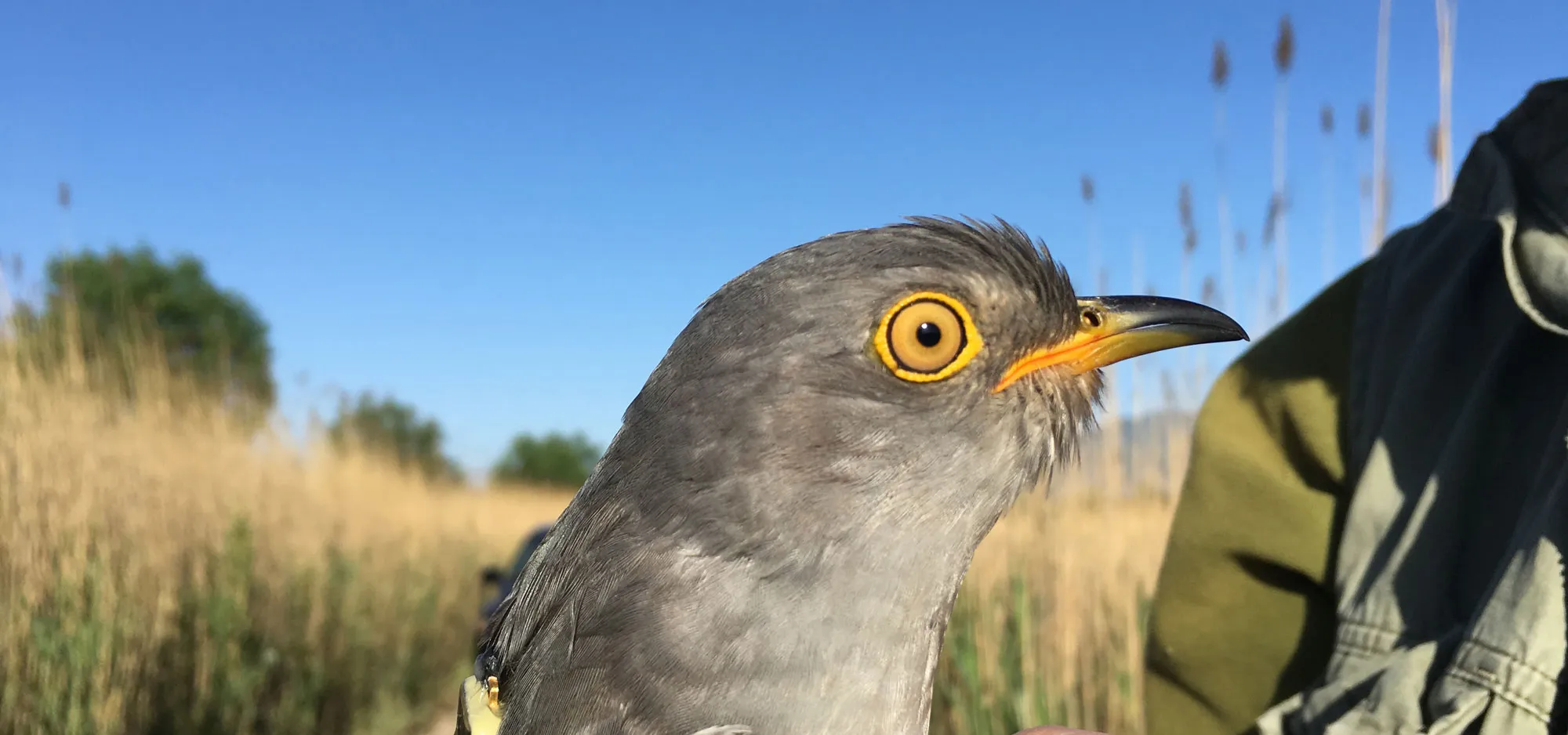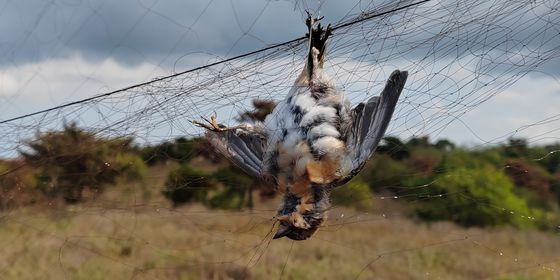The Beijing Cuckoo Project amazes scientists and inspires kids
The cuckoo isn’t the most beautiful of birds. It doesn’t have a BBC documentary-worthy mating dance, its call never inspired Keats, and aside from its status as a clock mascot it’s generally known for being a brood parasite. But a handful of cuckoos native to northern China have been inspiring children and enthralling scientists the world over.
Over the past year, the Beijing Cuckoo Project has answered a fundamental question about the migratory habits of the common cuckoo, but also, more importantly, introduced a whole new generation to the wonders of conservation.
The project seemed simple enough: use scientists and local volunteers to track Eurasian cuckoos with light weight trackers, and let the public watch. In May 2016, five cuckoos were caught outside Beijing (with a net, birdsong, and a stuffed female cuckoo), tagged, and sent on their way.
“By developing projects such as this and securing mainstream media coverage, we aim to inspire people who wouldn’t ordinarily read about birds,” Terry Townshend of Birding Beijing told TWOC. It worked. Perhaps the most famous of these birds is Flappy McFlapperson, sponsored by the Oriental Bird Club and named by the students of Dulwich International School in Beijing. Largely due to her odd moniker, Flappy was a hit on Reddit and the Times of India ran a piece when she crossed into Jaipur.
It was thought that this bird—a smallish species not known for its flying abilities—perhaps wintered in Southeast Asia, but more optimistic birders thought they might go as far as India. Flappy McFlapperson did, indeed, go to India…and then Bangladesh, then Oman and Yemen, then Somalia and Ethiopia, and when last reported, Flappy had made it to Kenya.
Skybomb Bolt, also named by the kids at Dulwich, turned out to be even more impressive, traveling on a nonstop journey from central India to Somalia, a 3,700 kilometer flight over the entire Arabian Sea. Jonathan Baillie, Director of Conservation at the Zoological Society of London, said of the event, “That a bird weighing around 100 grams can fly more than 3,700 kilometers non-stop over the Arabian Sea is astonishing and, through the engagement of school children in the world’s most populous country, this project is inspiring a new generation.”
When the third bird, Meng Zhi Juan (梦之鹃) made it to Somalia, the African Times cheered its safe journey. As of December 8, Flappy and Meng were just a few hundred kilometers apart, both in Kenya.
The winter behavior of the common cuckoo was a mystery in May, 2016, when the Beijing Wildlife Rescue and Rehabilitation Centre (BWRRC), the China Birdwatching Society (CBS), the British Trust for Ornithology (BTO), and Birding Beijing worked together to catch and tag the five specimens. Today, that picture is a little clearer.
But, even such a happy project isn’t free from harsh lessons. Of the original five, both Zhigui and Hope are believed dead. On the death of Hope, Beijing Birding announced on its website, “With the lack of movement in Hope’s location, especially as she summered so far north, this information leads us to believe she has died and her body is in a position where the tag’s solar panel is still receiving sunlight.”
These birds come from around Beijing, and for children interested in studying animals, life in a megacity can seem hopelessly devoid of nature. But Townshend has been using the Cuckoo Project to show kids in Beijing that there are plenty of birds to be found and that the science of observation is conservation.
“Beijing lies on the ‘Eastern Flyway’ and hundreds of millions of birds pass through every spring and autumn,” Townshend told TWOC. “With a huge landmass to the north, including Mongolia and Siberia, relatively uninhabited by humans, there are forests and tundra that provide ideal breeding places for many different species from cranes and storks to buzzards, eagles, and smaller birds like buntings and warblers.”
Beijing may be polluted, crowded, and paved, but it’s also a super highway for a number of important species because of the city’s geography. “More than 470 species of bird have been recorded in the capital, more than London, Paris, Washington DC, and most other major capital cities,” Townshend said. “In spring and autumn, it’s possible to see more than 100 species in a day at some of the best sites such as Yeyahu or Miyun Reservoir. So my advice to anyone interested in birding to pick up your binoculars, head out beyond the 6th Ring Road and enjoy the birds.”
The BTO, which has been tracking cuckoos since 2011, assisted in this project in no small part because there has been a reduction in the population of cuckoos in the UK over the past 20 years; their population has declined by half. The cuckoos of the Britain have been making the same journey from central Africa to Europe for thousands of years, and the first step to stopping their decline is understanding their migratory patterns. There are many different species of cuckoo, but a creature that travels such vast distances can be a bellwether that helps pinpoint holes in international conservation.
They’ve surpassed expectations, taught the world about birds, engaged children in one of the most important aspects of conservation, and even The New York Times ran with the headline “Cynical avian freeloader wins some respect.” Not bad for a brood parasite. As of the time of writing, Meng Zhi Juan, Skybomb Bolt, and Flappy McFlapperson were all still on the move. No one is really sure how old the specimens were when they were tagged, but it will be an exciting day for the birders of Beijing if they manage to make their way back.
Where in the World Is Flappy McFlapperson? is a story from our issue, “Taobao Town.” To read the entire issue, become a subscriber and receive the full magazine.












